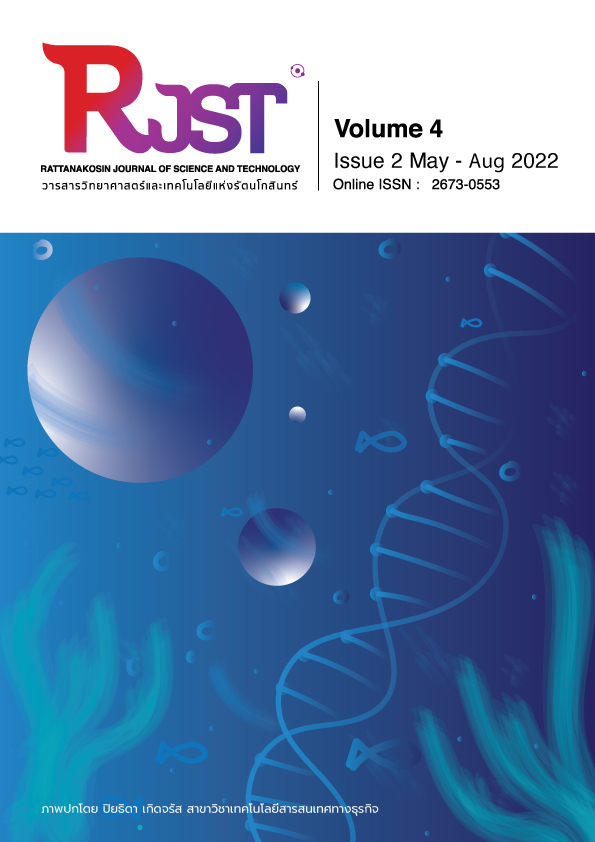Efficiency of rubber residual on the engineering properties for embankment
Main Article Content
Abstract
Nowadays, a number of rubbers from industrial become waste and have been continuously annually increased. Application of rubber tires for geotechnical engineering purposes is an alternative for reducing tire waste by mixed shredded tire and soils as light weight material in order to compact the soil on the soft clay layer. Therefore, this research is to study the engineering properties of rubber tires and rubber from industrial mixed with lateritic soil at various ratio by mean of compaction test and C.B.R. test. Moreover, the tank model under a same condition in laboratory was prepared for a plate bearing test. The obtained results reveal that the dry density significantly decreased with increasing of rubber portion. The field experiment with lightweight penetration test was used to evaluate the engineering properties. The results found that the number of blows(N) was decreasing with the increase in rubber content, and the number of blows(N) was increasing with the increase in depth. Finally, the diagram relating different properties established herein and could be applied to evaluate the engineering properties of alternative material (Soil mixed rubber tires) from lightweight penetration test.
Article Details

This work is licensed under a Creative Commons Attribution-NonCommercial-NoDerivatives 4.0 International License.
The content within the published articles, including images and tables, is copyrighted by Rajamangala University of Technology Rattanakosin. Any use of the article's content, text, ideas, images, or tables for commercial purposes in various formats requires permission from the journal's editorial board.
Rajamangala University of Technology Rattanakosin permits the use and dissemination of article files under the condition that proper attribution to the journal is provided and the content is not used for commercial purposes.
The opinions and views expressed in the articles are solely those of the respective authors and are not associated with Rajamangala University of Technology Rattanakosin or other faculty members in the university. The authors bear full responsibility for the content of their articles, including any errors, and are responsible for the content and editorial review. The editorial board is not responsible for the content or views expressed in the articles.
References
Yensri, P., Jongpradist, P. & Jamsawang, P. (2017). Behavior of T-Shaped Deep Cement Mixing Piles under Unit Cell Embankment Tests by a Physical Model, KMUTT R&D J., 40(3), 339-353.
Buritatun, A., Takaikaew, T., Horpibulsuk, S., Udomchai, A., Hoy, M., Vichitcholchai, N. & Arulrajah, A. (2020). Mechanical Strength Improvement of Cement-Stabilized Soil Using Natural Rubber Latex for Pavement Base Applications. J. Mater. Civ. Eng., 32(12), 04020372
Yensri, P., Jongpradist, P. & Jamsawang, P. (2017). Behavior of T-Shaped Deep Cement Mixing Piles under Unit Cell Embankment Tests by a Physical Model, KMUTT R&D J., 40(3), 339-353.
ชูศักดิ์ คีรีรัตน์, ปิยะพงศ์ กี่สวัสดิ์คอน และทวีศักดิ์ รุ่งศักดิ์ทวีกุล. (2021). การปรับปรุงคุณภาพดินลูกรังด้วยเถ้าหนักจีโอโพลิเมอร์สำหรับงานทาง. Rattanakosin Journal of Science and Technology, 3(2), 9–18.
Matsuo, A. (2002). Mechanical properties of air-cement-treated soils. Ground improvement, 6(1), 69–78.
Bosscher, P.J., Edil, T.B. & Eldin, N.N. (1992). Construction and performance of ashredded waste tire test embankment, Transp. Res. Rec, 44–52.
Department of Rural Roads. (2013). Standard Drawing.
Department of Highway. (1999). Standard of soil aggregate for subbase.
อรุณเดช บุญสูง (2020). การประเมินค่ากำลังรับน้ำหนักชั้นดินเหนียวแข็งด้วยวิธีการตอกหยั่งเบา.
วิศวกรรมสารฉบับวิจัยและพัฒนา, 31(3), 127–136.


